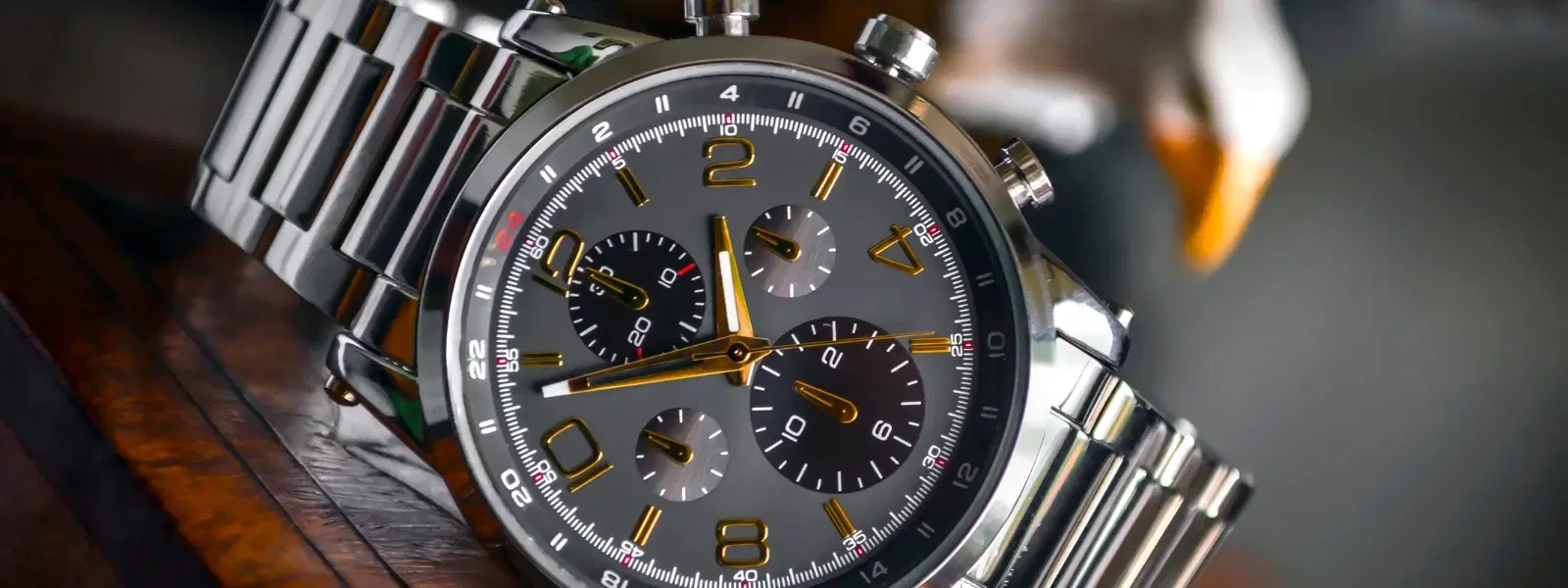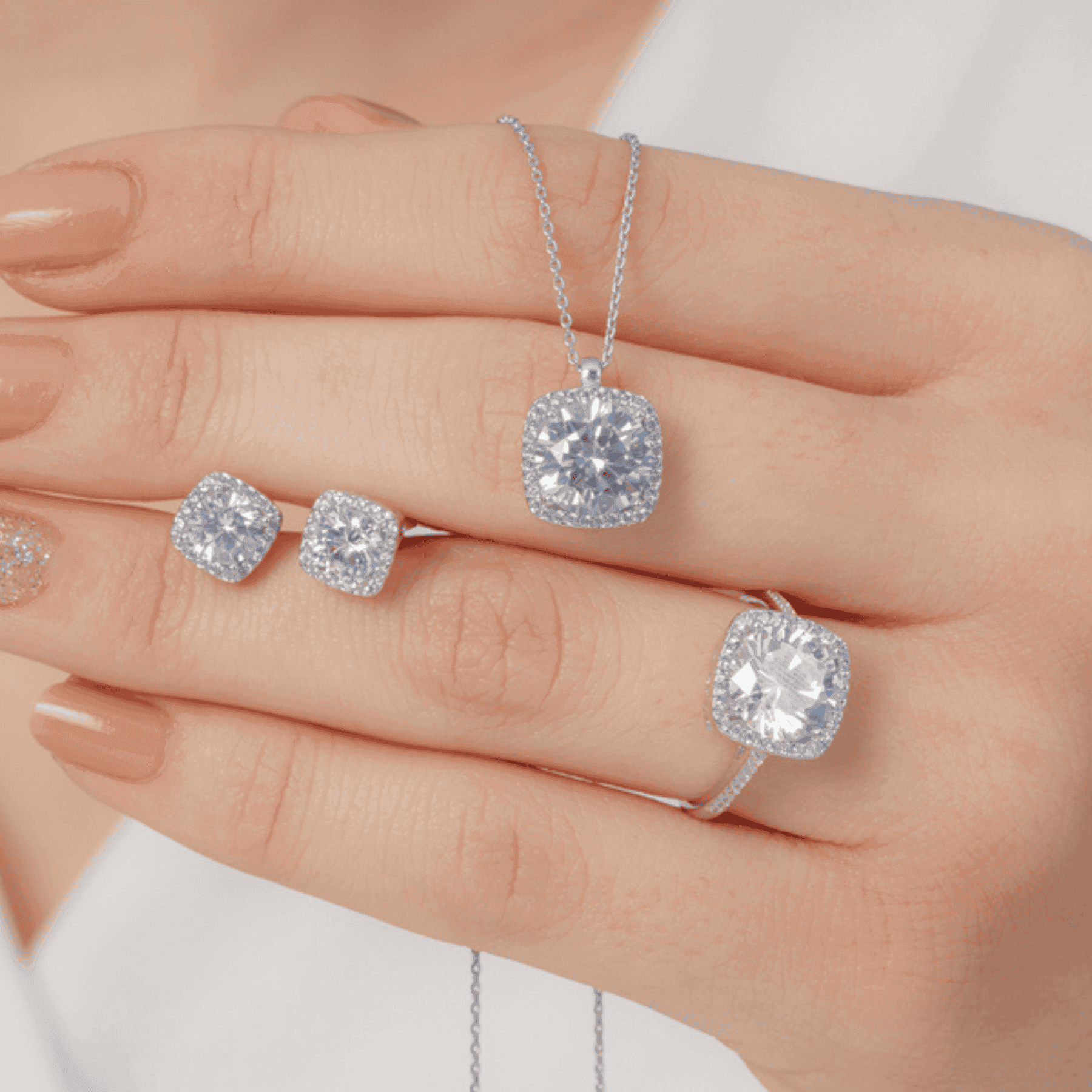
Watches & Jewellery
•05 min read

In the world of horology, watch complications tell stories of innovation and meticulous craftsmanship. They are not just features for timekeeping, but symbols of mechanical watch functions and luxury watch features. This article explores two popular complications – the chronograph and the tourbillon – to help you appreciate their unique role in high-end watch designs. You will learn what makes each one special and how they add value and elegance to modern timepieces.
Watch complications are defined as extra functions on a watch that go beyond simple timekeeping. They include elements like moonphase watches and perpetual calendar watches that track the date without manual adjustments. These innovative features highlight the intricate art of horology innovations and provide a practical charm to luxury timepieces. Some of the most common types of watch complications include:
Chronograph: A built-in stopwatch that is perfect for measuring elapsed time.
Tourbillon: A rotating cage designed to counteract the effects of gravity, enhancing accuracy in mechanical watch functions.
Moonphase: A display that tracks the current phase of the moon.
Perpetual Calendar: Automatically adjusts for different month lengths and leap years.
Complications elevate the wearer experience by merging functionality with art. They are designed to meet specific needs such as timing events for sports or accurately tracking celestial cycles. More than being a tool, each complication becomes a statement piece in high-end watch designs. The integration of features like automatic watch movements demonstrates the blend of style and technology, marking the evolution of luxury watch features. These innovations reflect responsible fashion values and a commitment to quality craftsmanship.
A chronograph watch goes beyond traditional timekeeping by incorporating a stopwatch feature. This complication makes it a practical choice for activities such as sports, aviation, and scientific measurements. It is celebrated for its versatility and utility. Chronograph watches include several key components that help manage the timing function:
Pushers: Buttons that control the start, stop, and reset functions.
Sub-dials: Smaller dials within the main face that provide quick-read information on elapsed time.
Chronograph watches are admired for marrying functionality with bold aesthetics. They often incorporate additional scales such as tachymeters, telemeters, or pulsometers. These extra features amplify their appeal as a practical yet stylish accessory. The design of chronograph watches often leans towards a sporty look, making them ideal for everyday use while still standing out in curated collections. Their robustness and reliability make them a favorite among enthusiasts who view fashion as self-expression and identity.

A tourbillon is a sophisticated mechanism originally created to counter the gravitational pull that can affect the accuracy of a watch. Enclosed in a rotating cage, the tourbillon houses both the escapement and the balance wheel. This brilliant innovation is one of the key mechanical watch functions that pushes the boundaries of traditional timekeeping. Within the realm of horology innovations, the tourbillon stands as a symbol of detailed craftsmanship and technical excellence.
Tourbillon watches exude a level of artistic sophistication that appeals to collectors and enthusiasts alike. They are less about everyday practicality and more about showcasing technical brilliance. The intricate design of the tourbillon, often visible through open dials or skeletonized layouts, adds an exclusive charm to high-end watch designs. Although these watches may not always be optimized for daily use like the chronograph, their precision and craftsmanship elevate them as masterpieces in the world of luxury timepieces.
When comparing chronograph and tourbillon watches, it is essential to consider their different functions. Chronograph watches highlight utility, featuring a built-in stopwatch function that makes them practical for many daily applications. In contrast, tourbillon watches concentrate on achieving superior accuracy by reducing gravitational errors. This primary difference serves as the foundation for their respective appeals in the realm of types of watch complications.
Design-wise, chronograph watches are known for their dynamic look. They typically feature multiple sub-dials and markers that not only measure time but also add a sporty edge to the overall design. On the other hand, tourbillon watches offer a more subdued aesthetic, with the rotating mechanism often showcased in a manner that turns technical mastery into an art form. Both serve as symbols of innovation in high-end watch designs, yet they cater to different style preferences—chronographs for those who prioritize utility and tourbillons for those who celebrate intricate artistry.
From a usability perspective, chronographs are highly adaptable for everyday wear and professional scenarios. Their ability to measure time with precision makes them a practical choice for individuals with an active lifestyle. Conversely, tourbillons are primarily designed for those who have an affinity for the art of watchmaking and appreciate the meticulous nature of manual assembly and adjustment. They offer an experience that is more ornamental and collectible, often appealing to those who treasure the heritage of mechanical watch functions and horology innovations.
While the chronograph and tourbillon capture much attention, luxury timepieces may also include other fascinating complications that further enhance functionality. Moonphase watches, for example, delicately display the lunar cycle, merging cosmic allure with luxury watch features. Perpetual calendar watches offer seamless timekeeping by automatically adjusting for leap years and varying month lengths. Additionally, automatic watch movements use a rotor that winds the watch based on the natural motion of the wearer's wrist. These added features not only read as a testament to the future of mechanical watch functions but also bolster the appeal of high-end watch designs.

Complications fundamentally contribute to the uniqueness of luxury timepieces. They reflect the evolution of traditional watchmaking brought forward by horology innovations. Each complication, whether a chronograph or a tourbillon, is integrated to enhance the overall experience of the wearer by combining functionality with an elevated sense of style and identity. These elements complement the ethos of curated collections and authenticity that resonates with our vibrant, inclusive, and style-savvy audience. In many ways, watch complications allow wearers to express themselves while enjoying the intersection of art and technical prowess.
Insight Corner: The Artistry Behind Complications
Did you know? The tourbillon mechanism typically requires more than 40 individual components and can take months to assemble by hand. This level of craftsmanship exemplifies why tourbillon watches are admired as true masterpieces in the field of horology innovations.
Complications are additional features in a watch that extend beyond basic timekeeping, like chronographs, moonphase displays, and perpetual calendars.
A chronograph includes a built-in stopwatch function, making it practical for measuring elapsed time in various scenarios.
A tourbillon uses a rotating cage to lessen the effects of gravity on the watch’s mechanism, thus improving overall accuracy.
Yes, many luxury timepieces feature a blend of complications such as automatic watch movements, moonphase displays, and even perpetual calendar functions, each enhancing the watch's functionality and design.
The comparison between chronograph and tourbillon watches highlights two distinct approaches in watchmaking. Chronographs are celebrated for their interactive, practical applications and sporty design, while tourbillons captivate with their innovative precision and artistic appeal. Both types of watch complications contribute to the rich tapestry of luxury watch features available today. Understanding these elements not only enhances your appreciation for high-end watch designs but also celebrates the legacy of mechanical watch functions and horology innovations that define modern craftsmanship.